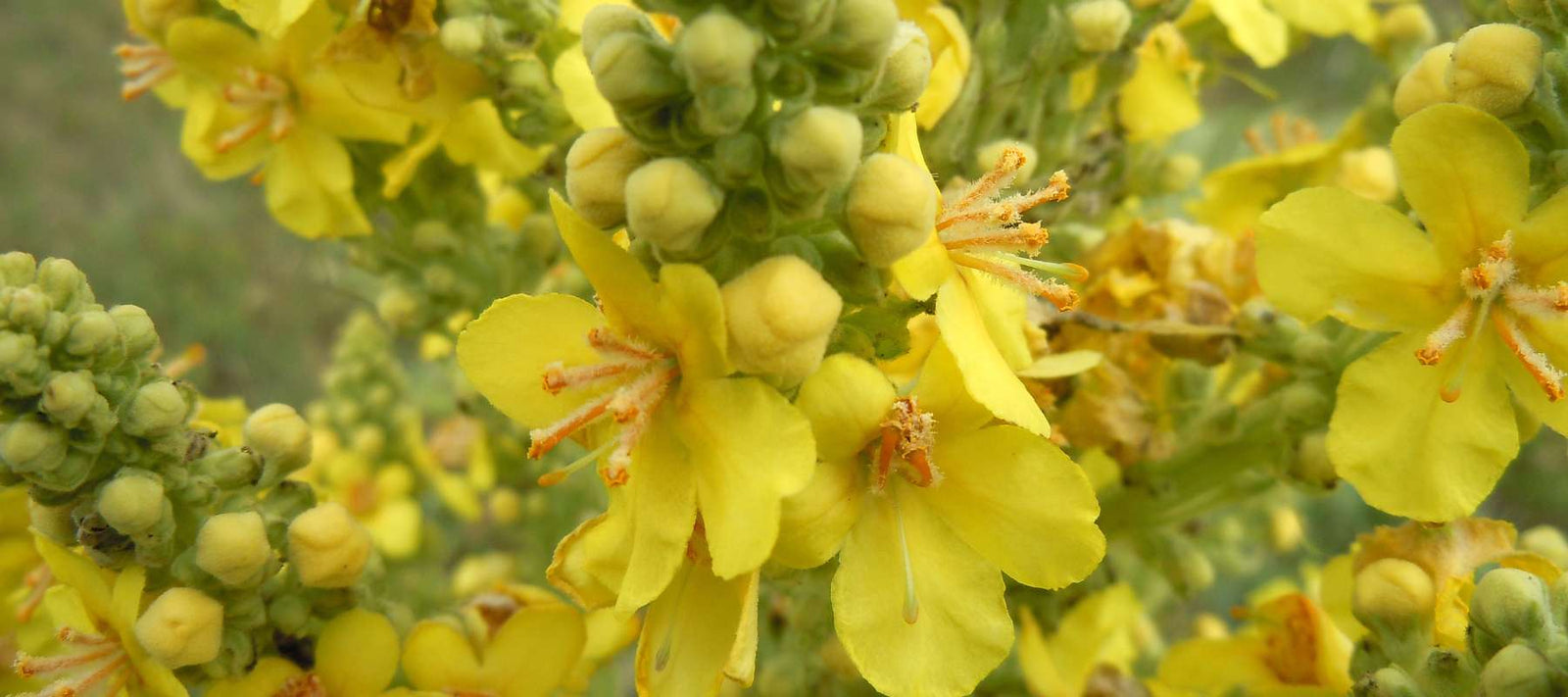Mullein, or Verbascum thapsus, has been used as a medicinal herb since ancient times in its native regions of Europe, Asia, and Africa. When early Virginia settlers brought it to the Americas to use as a fish poison, the Native Americans quickly recognized its value as a medicinal herb. They quickly adopted its cultivation, incorporating it into their health traditions, just like many other cultures around the world. Although many consider it a weed, today more people are beginning to see the value of this beneficial herb and are finding ways to add it to their gardens.
Perfect for Poor Soils
A biennial or short-lived perennial, mullein is often spotted in places with disturbed or bare soils, like roadsides, neglected pastures, and construction sites. It’s remarkably adaptable to various environments and is especially well adapted to dry, sandy, poor, and depleted soils. Once established, its long taproot provides an anchor that allows the plant to absorb water and minerals from deep within the soil. This helps mullein thrive where more fussy plants wouldn’t even have a chance. It’s a popular choice for rock gardens and xeriscape gardens, or any sunny spot that has poor soil that could use improvement. The long taproot helps to anchor the soil, loosening it and pulling nutrients to the surface. The leaves also shade the bare soil and help to further prevent soil depletion and erosion.
Reputation As a Weed
Although mullein is an excellent addition to a survival garden, it’s important to choose your planting spot wisely and take care to prevent volunteers and harmful spreading. Its resilience and the ability of its seeds to live for many years in the soil make it quite persistent. Established populations can be difficult to remove if allowed to self-seed. Its ability to outcompete other plants can cause a problem in some areas. Experienced gardeners have observed that the plant population tends to recede as the soil health improves. (This has also been anecdotally reported with other “weeds” like common plantain and dandelion.) Mullein usually dies after flowering the second year, returning nutrients to the soil as it decays.
A Uniquely Beautiful Plant

Mullein has an unusual but striking appearance, with large fuzzy grey-green leaves in a low-growing rosette. In the second year, the tall flowering central stalks can reach 5-10 feet, towering over many of the other plants in the garden. The cheerful sunny yellow blooms will attract a variety of beneficial insects to your garden.
How to Grow Mullein from Seed
Mullein is extremely easy to cultivate. Simply sow the tiny seeds directly into the soil anytime from late fall to spring. If you’re planting in spring, 4 weeks of cold stratification can improve germination rates. Choose a sunny spot, as mullein does not tolerate shade, and space plants 12-18” apart. Sandy, compacted, or dry sites are all excellent choices because the plant doesn’t like wet conditions. The seeds need light to germinate, so avoid covering them with soil. Keep the soil moist but not soggy, and you'll soon see the seedlings emerge. You can also start indoors and move your seedlings outdoors after the last frost, taking care not to disturb the plant’s taproot while transplanting. As the plant matures, it requires minimal care and even seems to thrive on neglect!
The Benefits of Mullein
For centuries, mullein has been revered for its medicinal properties and is now grown worldwide as an herbal wellness aid. Although scientific research has only scratched the surface of the benefits of this hardy plant, its usefulness as an herbal medicine is connected to its potent anti-inflammatory properties and chemical composition.
Harvesting & Storing Mullein
Harvest the leaves anytime you want, particularly before or during flowering. Lower leaves may need to be discarded if they are damaged or exceptionally dirty. Harvest the blooms individually or by cutting the stalk during flowering. A long needle-nosed spade can help you dig up the roots. Take care to dry thoroughly for mold prevention. Spread the leaves and flowers in a single layer in a well-ventilated, dry area away from direct sunlight. Store in airtight containers in a cool, dark place to preserve the quality of your herbs.

Using Mullein Medicinally
All parts of the plant are used medicinally, whether fresh, dried, or extracted. Mullein is especially well-known for pulmonary and respiratory support. It can provide soothing relief for conditions like coughs and bronchitis. The leaves and flowers are commonly used to prepare teas and tinctures, providing soothing relief for throat irritations and mild respiratory complaints.
An Adaptable Herb for Your Survival Garden
If you’re looking for an easy, low-maintenance plant for that troublesome hotspot in your garden, mullein can be a good choice. It can improve soil quality in the garden while providing a beneficial medicinal herb to increase your self-reliance. Add this helpful plant to your garden and discover for yourself the joys of this misunderstood herb.


























